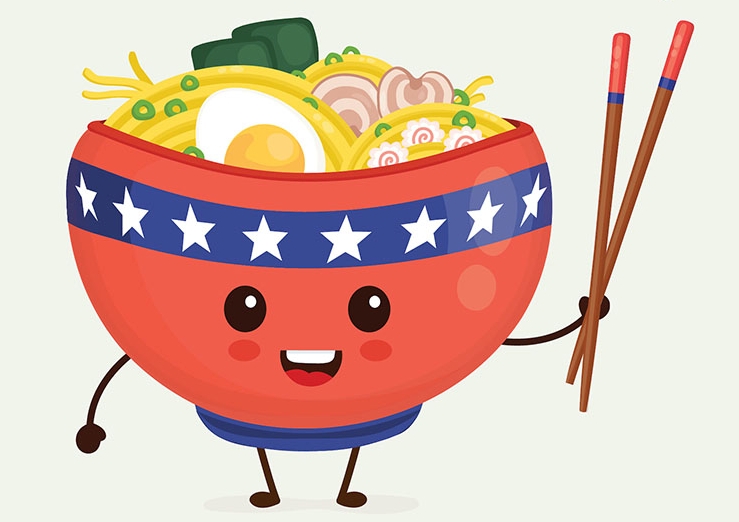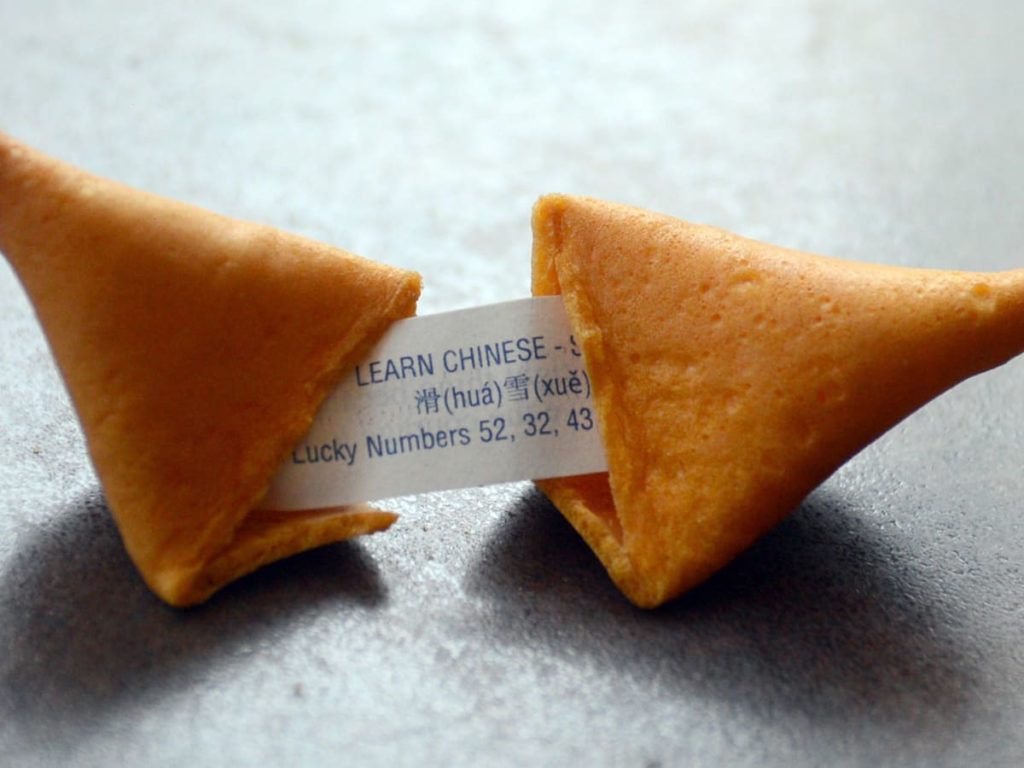Books: Tabemasho! Let’s Eat!
September 12, 2022 · 0 comments
By Jonathan Clements.

Nigella Lawson, Britain’s very own kitchen goddess, introduced the housewives of middle England to frankfurters marinaded and baked in honey and soy sauce, something that soon became a Christmas staple in my own house. She neglected to mention in Nigella Express, however, that this dish was something that Japanese-Americans had savoured for decades. Gil Asakawa’s Tabemasho! Let’s Eat! A Tasty History of Japanese Food in America reveals the existence of the Weenie Royale – “cut-up hot dogs mixed with scrambled eggs and soy sauce” – and the even more Nigella-esque Kikkoman Shoyu Wieners.
Asakawa is strong on the chronology of soy sauce, which he chronicles through the message imparted in numerous TV and newspaper commercials. The Kikkoman corporation, he observes, was often careful to de-orientalise its condiment, presenting it as a flavour enhancer to add pizzazz to a white folks’ barbecue – divorced from any Asian connections, but attached to recipe suggestions from the company itself that would spice up a mid-Western cookout.
There’s a special historians’ joke that always has them rolling in the aisles at conferences: the British think that 100 miles is a long way, and the Americans think that 100 years is a long time. Asakawa’s account, despite plenty of call-backs to the deeper past, concentrates on the last century, not the least because a sense of distinction between Japanese food and Chinese food, at least among the American mainstream, required WW2 to sort the two of them out in the public consciousness. Even among the Japanese-Americans, as Asakawa notes, “our” food as revealed through recipe books and personal testimonies, came to encompass a large number of Chinese and Vietnamese dishes.

Asakawa excels at narrating the development of a specifically Japanese-American cuisine, far removed from Japanese origins. He is particularly informative about the various hacks and concessions made to the palate of Occupation-era G.I.s, including the invention of tako-rice and the sudden boom in yakitori, which was relatively rare in Japan but became popular through the non-threatening familiarity it offered to American newcomers. He delves into the experiences of Hawaiian Japanese, inventors of Spam musubi and the loco moco (a hamburger on top of rice), although he shies away from what is surely another oncoming cultural-appropriation argument over who invented the poke bowl. Then there’s his own mother’s horrified reaction to the California Roll, today a staple of sushi bars, but once a gaijin abomination.
The book also veers away from main courses into other edibles – there is a chapter on drinks, for example, and another on candy. Asakawa relates the story of Taichiro Morinaga, whose confectionary company was inspired by a trip to the USA in the 1890s, and whose Hi-Chews brand became a new fad in American when the Boston Red Sox gained a Japanese pitcher in 2012. He also reveals why the Glico company has a running man as its logo – supposedly the founder Riichi Ezaki had added glycogen, “a form of glucose from oysters” to his sweets, making the dodgy promise that this imparted the energy to run 300 metres in a single piece. Surprisingly, although Asakawa includes Jennifer Lee’s Fortune Cookie Chronicles in his bibliography, he steers clear of this quintessentially “Chinese-American” item, which Lee herself uncovered as being a Japanese invention appropriated by the Chinese during the 1940s internments.

Japanese food is a well-trodden road, both in Japanese accounts and in multiple English-language histories. Asakawa’s own bibliography tips its hat to George Solt’s Untold History of Ramen, which unpacks noodles into an entire book of their own, and with which Asakawa cannot possibly compete in a more general work such as this. Meanwhile, Eric C. Rath’s Oishii: The History of Sushi goes far deeper into the diverse history of the snack food to which Asakawa can only devote a single chapter. But Asakawa is not aiming to tell an all-encompassing story of Japanese food, merely of Japanese food in America, itself a fascinating and many layered narrative. His writing is breezy and chatty, rarely getting bogged down in citations or scholarly mitigations – this might lead the more obsessive food historian to repeatedly cough from the wings with quibbles and whataboutery, but for the general reader it amounts to a welcome run-down of the high points of Japanese-American food history, more of a fast-food ramen account of history than some imperial academic banquet.
Occasionally, this leads to minor slips or fudges. Matthew Calbraith Perry, commander of the Black Ships, we are told, “took soy beans home after he opened Japan to trade with America.” He may well have done, but soybeans were first planted in America in 1767, before Perry was even born. The Mikado’s Titipu, Asakawa says, is an “outrageously stupid name that isn’t remotely Japanese”, which again, may be true, except it surely derives from Chichibu, where a workers’ revolt in 1884 made the international news and came to the attention of Gilbert and Sullivan. Possibly inadvertently, Asakawa implies that teppan grills are a post-war invention, whereas they were used to cook okonomiyaki since the Meiji era.

Amid the usual catfights over which cook in which state invented which commonplace modern dish, Asakawa has space to discuss some of the more surprising stories in food history, such as the fact that the fatty parts of tuna, vital for high-class sashimi, were once discarded in the United States as only suitable for cat food, while the “bloody-red flesh” of tuna was “considered too strong-tasting and smelly.” In a moment of technological determinism, Asakawa ascribes the rise of refrigeration as instrumental in the spread of the sushi bar, although he is oddly quiet on one of Japanese-American food’s biggest stories – the involvement of a religious cult in the nationwide restaurant and supply industry.
He finishes with a prolonged rant about the changing position of Japanese food within American culture, from the presentation of a bento box as an aristocratic pretention in The Breakfast Club, to the ghastly-sounding diner challenge at one noodle bar, where anyone who can keep down a whole bowl of their super spicy noodles gets a T-shirt. Well done, I guess…? But such asides are the true gems in Asakawa’s account, in which he brings his entire life-experience to bear on everything from the hidden meaning of “Sukiyaki” (the first Japanese song to go to number one in America), the reason Calpis was renamed Calpico and the Japanese obsession with the Kit-Kat.
Jonathan Clements is the author of The Emperor’s Feast: A History of Chinese Food in Twelve Meals. Gil Asakawa’s Tabemasho! Let’s Eat! A Tasty History of Japanese Food in America is published by Stone Bridge Press.
Leave a Reply